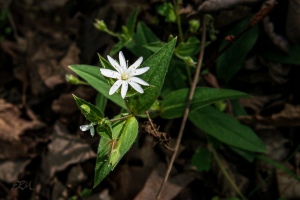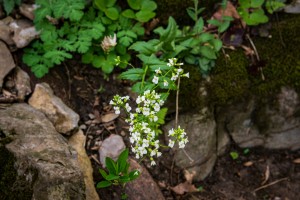
Viola pedata
Last spring my friend B discovered a small population of bird’s foot violet (Viola pedata) near Great Falls. This was exciting because it was the first reported sighting of the species in Montgomery County since the mid-20th century*.

Viola palmata
I went to the location a few days later and took some pictures. A few days after that, in a nearby but different location, I found a patch of similar-looking plants, but they had finished blooming. I had to wait a year to follow up…
…which I did last week. That second patch was good news/bad news: it was in full bloom, but it wasn’t bird’s foot violet. It was Viola palmata, aka early blue violet or wood violet.
Violet identification can be tricky, but V. palmata and V. pedata are pretty easy to tell apart. Here’s a quick primer.

Viola pedata
Have a look at the leaves: in both species they are dissected. V. pedata leaves will have anywhere from 5 to 11 narrow lobes.

Viola palmata
The leaves of Viola palmata are more variable. Two leaf types are shown here, one with lobes somewhat wider than V. pedata‘s, and the other with fewer, broader lobes.

Viola palmata

Viola palmata

a small colony of V. palmata in bloom.
Typically it’s better to ID species from flowers rather than leaves, so let’s look at those:


Viola pedata is on the left. Note that it has an orange center, while Viola palmata, on the right, has hairs in the center (click on the pictures to zoom in). V. pedata typically has two darker upper petals, but not always.

Viola pedata
In my (rather limited) experience, V. palmata is much more common than V. pedata in the Maryland piedmont. Both species are found in dry, rocky woodlands, but V. palmata likes moister soils, too. The stand that B found is on a sandy rock outcropping in the Gold Mine Tract. If you find bird’s foot violet anywhere in the Maryland Piedmont, please leave a comment here!
*per Maryland Biodiversity Project
 [right and below]
[right and below]






































